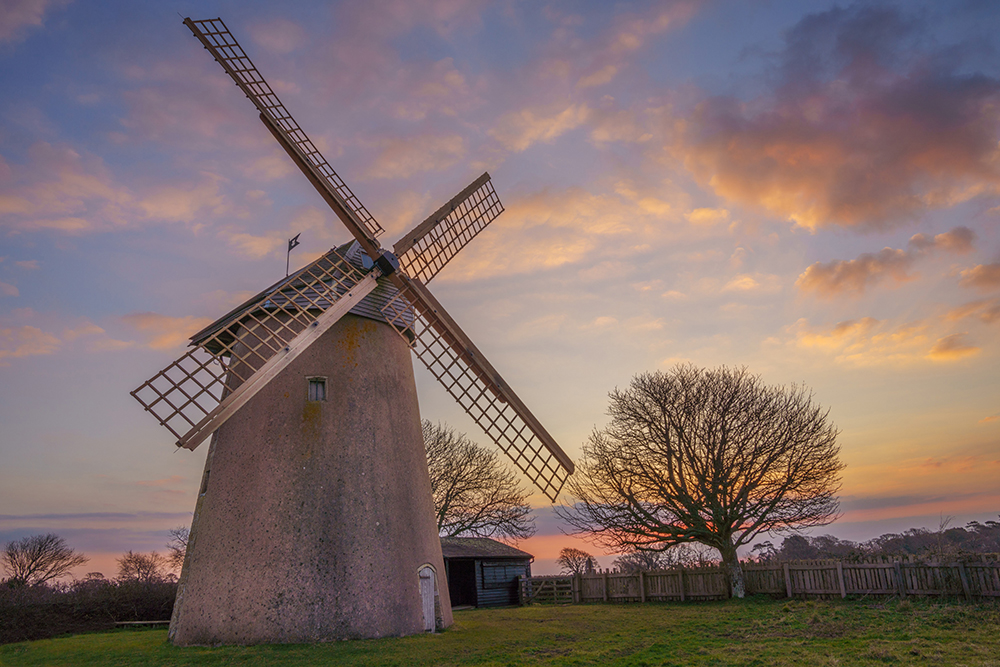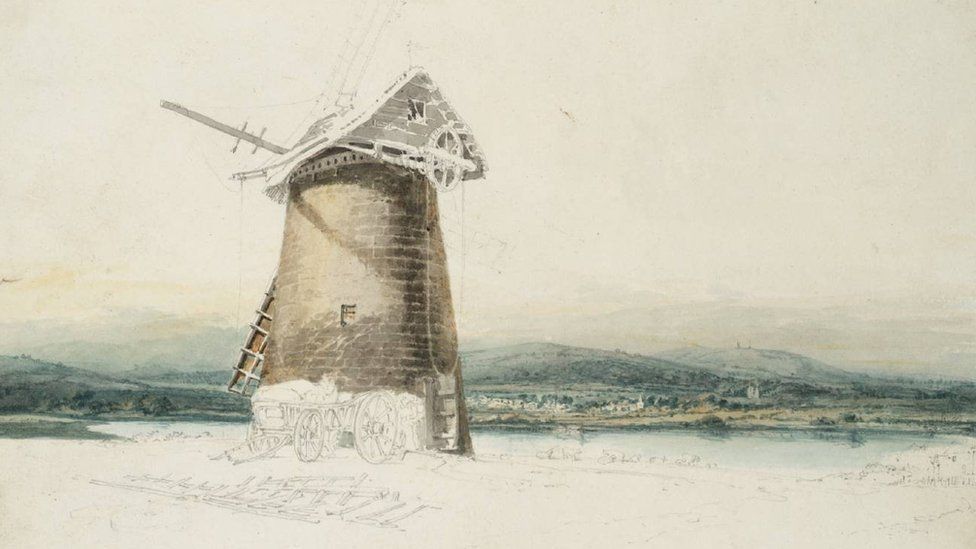The last surviving windmill on the Isle of Wight has been restored by the National Trust to its appearance when it was captured in watercolor by J.M.W. Turner in 1795. New sails have been fitted to the 300-year-old structure.
An important landmark on the Isle of Wight, Bembridge Windmill and the landscape in which it sits has changed little since Turner painted it in 1795. Built in the early 1700s, the windmill served its community for over 200 years. Poignantly, milling stopped and never resumed when the men left the island to fight in World War I.
One of seven original windmills on the Isle of Wight, Bembridge Windmill is now the only survivor. Today, this much-loved local landmark sits in a quiet corner of a field, perched high enough for its sweeps to be seen across the surrounding countryside.
In more recent years, the mill has been a wartime shelter, a Home Guard HQ, and has faced dereliction. It was rescued and given to the National Trust 60 years ago in 1961.
New sweeps and stocks – the timber frame and beams that make up each sail on a windmill – have replaced a set that were removed over two years ago because the wood was beginning to decay.

The project to restore the mill’s sails required a crane to lift the new sweeps almost 50 feet into the air. High up in a cherry picker, the millwrights carried out the painstaking work of aligning and bolting together the sweeps and their heavy 11-meter-long stocks. Each pair weighs around 600kg, and the complex, highly skilled job took several days.
The work was carried out by the same millwright who last fitted sweeps to the windmill 40 years ago. Geoff Wallis, from Dorothea Restorations, returned with his son, John, who has followed him into the business.
“There are a few millwrights still about, but it takes a lifetime to learn the skills,” said Geoff. “I’ve been in the business for 45 years and my mission is to pass my skills on to future generations; I’m still learning though. Each mill is different – different ages, different construction, materials, technologies – it’s wonderful to see how they were put together and to study the skills of former millwrights.

Now in the collection of the Tate, this unfinished drawing by J.M.W. Turner was begun in 1795 and inscribed, “Nunwell & Brading from Bembridge Mill.” No finished view of Bembridge Mill by the artist is known.
“Bembridge Windmill is a terrific example of this. Being a small country mill it was probably never prosperous enough to be updated with modern machinery so much of its original construction is still intact. It’s basically an authentic 18th-century mill. You can see all the little changes that have taken place over time though, and these things tell the mill’s story. For a millwright like me it’s absolutely fascinating, and a great privilege.”

The total cost of the work was £38,000. The costs were met by local fundraising and a grant of just over £10,000 from the Government’s Culture Recovery Fund, part of the £1.57 billion to help heritage organizations through the coronavirus pandemic.
The National Trust hopes to reopen the mill, as soon as government guidelines allow, to pre-booked visits three days a week.
Operations Manager on the island, Kathryn Wilson said: “People on the island will be thrilled to see the mill reunited with its sails; it’s looked so forlorn without them. We know it has a special place in many hearts – it’s what brought me to the Isle of Wight over a decade ago and it is the most important building in the National Trust’s care here.
“We’re really looking forward to welcoming visitors back to the mill, to discover its stories, and to enjoy the thrill of clambering to the top and taking in those glorious views across the fields and out to the sea.”




